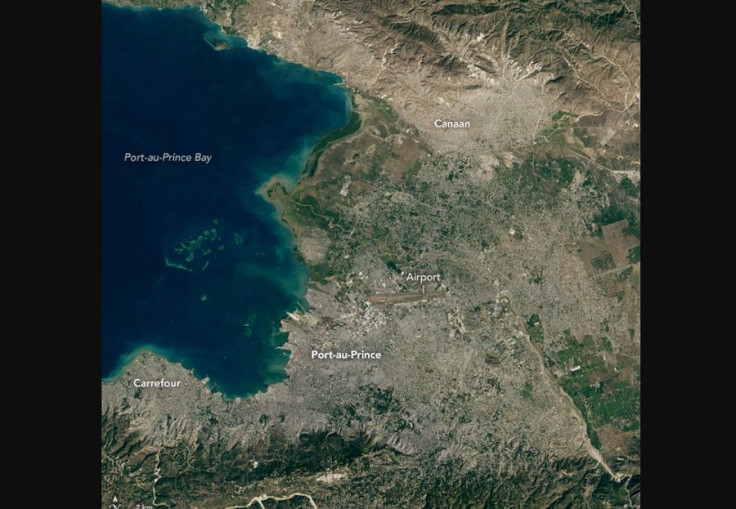Satellite Image Shows Haiti’s Accidental City Of Canaan

KEY POINTS
- A satellite image shows the accidental city, Canaan, north of Port-au-Prince in Haiti
- Many of Canaan's residents were survivors of the 2010 earthquake
- Many of them built their own houses in Canaan after years of living in tents
Satellite images show how much the area around Haiti's capital has changed after the devastating 2010 earthquake. A once empty hillside is now home to 200,000 people, many of whom were survivors of the earthquake.
The Jan. 12, 2010, earthquake in Haiti lasted for just about 35 seconds, but killed hundreds of thousands of people, injured over a million and left 1.5 million Haitians homeless. The NASA Earth Observatory's "image of the day" for June 1 showed the massive difference in Port-au-Prince years before the earthquake and today, when an accidental city can already be seen in a previously desolate land.
In the first image, which was taken by the Landsat 5 satellite on Feb. 28, 1986, the area around Port-au-Prince is still quite green, showing deforested yet unoccupied land. According to NASA Earth Observatory, before the 2010 earthquake, the area's only occupants were goats.

The second image, taken recently Feb. 24, 2020, showed a vastly different landscape as the once desolate land has become occupied. In a once empty hillside north of Port-au-Prince now stands a city called Canaan — the country's third largest city.
Many of the people now residing in Canaan were those displaced by the earthquake and had to live in tents for quite a while after the event. However, there are also some residents who were not affected by the earthquake, but chose to move to the city.
By the time the second image was taken earlier this year, over 200,000 people had moved to Canaan, many of whom had to built their own houses from their small incomes.
"The city has grown so rapidly and in such unpredictable ways that even maintaining accurate, updated maps is a challenge," a statement by the NASA Earth Observatory said.
Unfortunately, even over 10 years after the earthquake, many of the survivors are still exposed to the same dangers as before.
"Ten years later, we see an even greater concentration of people in the metropolitan area," Hatian economist Kesner Pharel told AFP in January. "If we were to have a quake of the same magnitude, the results would be the same . The country was never rebuilt, and we're back to square one."
© Copyright IBTimes 2025. All rights reserved.






















